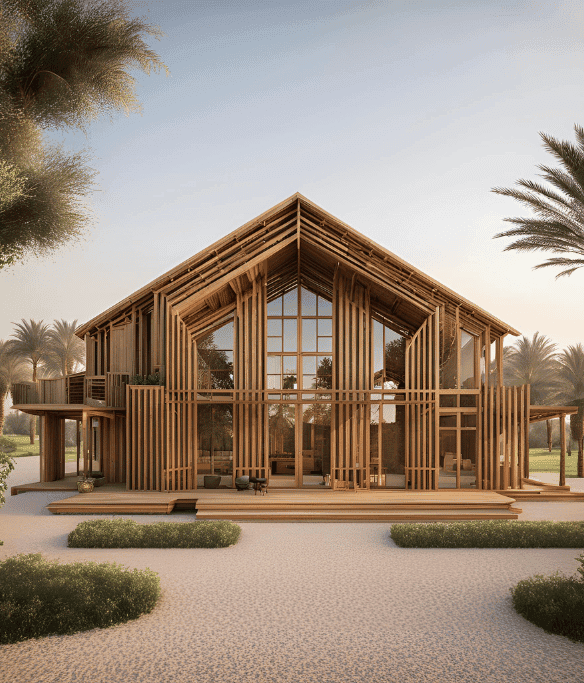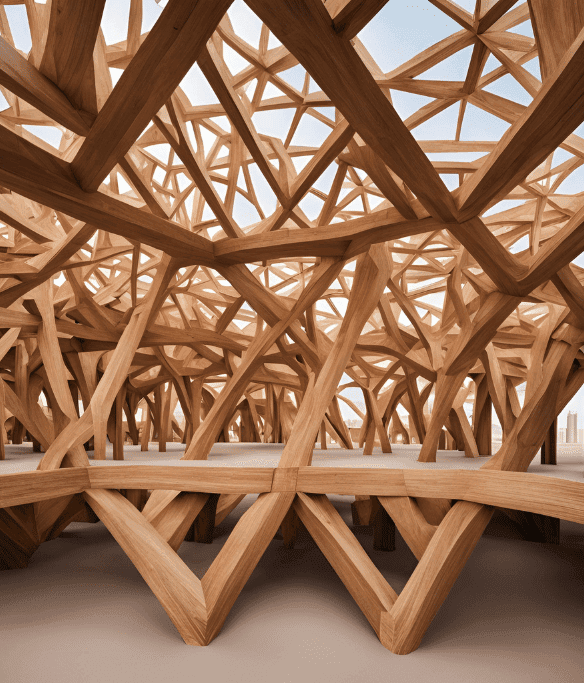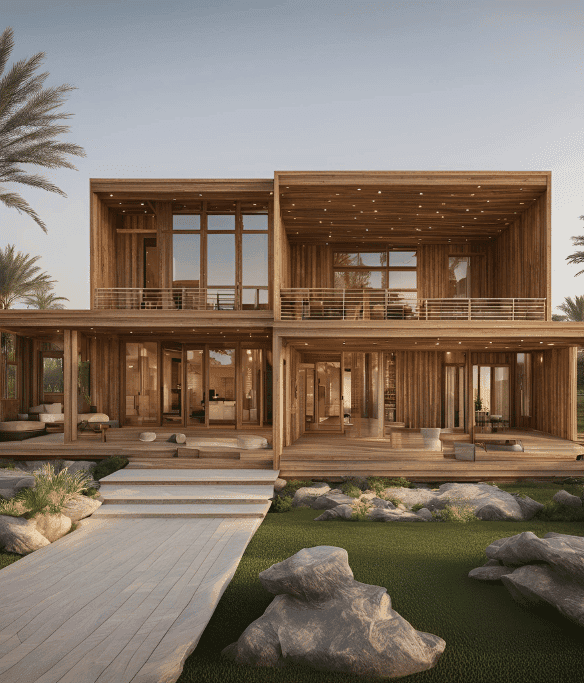In this blog post, we'll explore the importance of pollinator-friendly gardens and share tips for attracting bees, butterflies, and other beneficial insects to your outdoor space. From selecting native plants and providing habitat to avoiding pesticides and providing water sources, creating a pollinator-friendly garden is easier than you think.
In this blog post, we'll explore the importance of pollinator-friendly gardens and share tips for attracting bees, butterflies, and other beneficial insects to your outdoor space. From selecting native plants and providing habitat to avoiding pesticides and providing water sources, creating a pollinator-friendly garden is easier than you think.
About Author


AL HATTAB is the leading manufacturer and trader of outdoor wooden structures, garden furniture, and complex interior solutions involving aluminum and glass projects in the UAE, specializing in both standard and custom-made prefabricated structures.
About Author

AL HATTAB is the leading manufacturer and trader of outdoor wooden structures, garden furniture, and complex interior solutions involving aluminum and glass projects in the UAE, specializing in both standard and custom-made prefabricated structures.
Introduction:
Pollinators play a crucial role in our ecosystem, facilitating the reproduction of flowering plants and ensuring the production of fruits, vegetables, and seeds. Unfortunately, many pollinator species are facing population declines due to habitat loss, pesticide use, and other factors. By creating a pollinator-friendly garden, you can provide essential habitat and resources for bees, butterflies, and other pollinators while beautifying your outdoor space. In this blog post, we'll share tips and strategies for creating a garden that welcomes and supports pollinators of all kinds.
Tip 1: Choose Native Plants: Selecting native plants is key to attracting and supporting local pollinator species. Native plants have evolved alongside native pollinators and provide essential food and habitat. Choose a variety of flowering plants that bloom at different times throughout the year to provide nectar and pollen sources for pollinators from spring to fall.
Tip 2: Provide Habitat: Create diverse habitats within your garden to support a wide range of pollinator species. Incorporate features like rock piles, brush piles, and hollow stems for nesting and overwintering. Leave some areas of bare soil for ground-nesting bees and provide sheltered spots for butterflies to roost and bask in the sun.
Tip 3: Avoid Pesticides: Minimize or eliminate the use of pesticides in your garden to protect pollinators from harmful chemicals. Instead, use integrated pest management strategies such as hand-picking pests, encouraging natural predators, and practicing crop rotation. Choose organic gardening methods and products whenever possible to support a healthy and diverse ecosystem.
Tip 4: Provide Water Sources: Pollinators need water for hydration, especially during hot summer months. Provide shallow dishes or birdbaths filled with clean water for pollinators to drink from. Adding rocks or floating plants to the water source can provide landing spots for bees and butterflies.
Tip 5: Create Blooming Borders: Planting flowering borders along the edges of your garden or property can act as a beacon for pollinators, guiding them to your garden. Choose a mix of perennial and annual flowers in a variety of colors, shapes, and sizes to appeal to a wide range of pollinator species.
Conclusion:
Creating a pollinator-friendly garden is not only beneficial for bees, butterflies, and other pollinators but also for the health and vitality of your garden ecosystem as a whole. By following these tips and incorporating pollinator-friendly practices into your gardening routine, you can make a positive impact on the environment and enjoy the beauty and biodiversity of a thriving pollinator garden right in your own backyard.
Introduction:
Pollinators play a crucial role in our ecosystem, facilitating the reproduction of flowering plants and ensuring the production of fruits, vegetables, and seeds. Unfortunately, many pollinator species are facing population declines due to habitat loss, pesticide use, and other factors. By creating a pollinator-friendly garden, you can provide essential habitat and resources for bees, butterflies, and other pollinators while beautifying your outdoor space. In this blog post, we'll share tips and strategies for creating a garden that welcomes and supports pollinators of all kinds.
Tip 1: Choose Native Plants: Selecting native plants is key to attracting and supporting local pollinator species. Native plants have evolved alongside native pollinators and provide essential food and habitat. Choose a variety of flowering plants that bloom at different times throughout the year to provide nectar and pollen sources for pollinators from spring to fall.
Tip 2: Provide Habitat: Create diverse habitats within your garden to support a wide range of pollinator species. Incorporate features like rock piles, brush piles, and hollow stems for nesting and overwintering. Leave some areas of bare soil for ground-nesting bees and provide sheltered spots for butterflies to roost and bask in the sun.
Tip 3: Avoid Pesticides: Minimize or eliminate the use of pesticides in your garden to protect pollinators from harmful chemicals. Instead, use integrated pest management strategies such as hand-picking pests, encouraging natural predators, and practicing crop rotation. Choose organic gardening methods and products whenever possible to support a healthy and diverse ecosystem.
Tip 4: Provide Water Sources: Pollinators need water for hydration, especially during hot summer months. Provide shallow dishes or birdbaths filled with clean water for pollinators to drink from. Adding rocks or floating plants to the water source can provide landing spots for bees and butterflies.
Tip 5: Create Blooming Borders: Planting flowering borders along the edges of your garden or property can act as a beacon for pollinators, guiding them to your garden. Choose a mix of perennial and annual flowers in a variety of colors, shapes, and sizes to appeal to a wide range of pollinator species.
Conclusion:
Creating a pollinator-friendly garden is not only beneficial for bees, butterflies, and other pollinators but also for the health and vitality of your garden ecosystem as a whole. By following these tips and incorporating pollinator-friendly practices into your gardening routine, you can make a positive impact on the environment and enjoy the beauty and biodiversity of a thriving pollinator garden right in your own backyard.
Introduction:
Pollinators play a crucial role in our ecosystem, facilitating the reproduction of flowering plants and ensuring the production of fruits, vegetables, and seeds. Unfortunately, many pollinator species are facing population declines due to habitat loss, pesticide use, and other factors. By creating a pollinator-friendly garden, you can provide essential habitat and resources for bees, butterflies, and other pollinators while beautifying your outdoor space. In this blog post, we'll share tips and strategies for creating a garden that welcomes and supports pollinators of all kinds.
Tip 1: Choose Native Plants: Selecting native plants is key to attracting and supporting local pollinator species. Native plants have evolved alongside native pollinators and provide essential food and habitat. Choose a variety of flowering plants that bloom at different times throughout the year to provide nectar and pollen sources for pollinators from spring to fall.
Tip 2: Provide Habitat: Create diverse habitats within your garden to support a wide range of pollinator species. Incorporate features like rock piles, brush piles, and hollow stems for nesting and overwintering. Leave some areas of bare soil for ground-nesting bees and provide sheltered spots for butterflies to roost and bask in the sun.
Tip 3: Avoid Pesticides: Minimize or eliminate the use of pesticides in your garden to protect pollinators from harmful chemicals. Instead, use integrated pest management strategies such as hand-picking pests, encouraging natural predators, and practicing crop rotation. Choose organic gardening methods and products whenever possible to support a healthy and diverse ecosystem.
Tip 4: Provide Water Sources: Pollinators need water for hydration, especially during hot summer months. Provide shallow dishes or birdbaths filled with clean water for pollinators to drink from. Adding rocks or floating plants to the water source can provide landing spots for bees and butterflies.
Tip 5: Create Blooming Borders: Planting flowering borders along the edges of your garden or property can act as a beacon for pollinators, guiding them to your garden. Choose a mix of perennial and annual flowers in a variety of colors, shapes, and sizes to appeal to a wide range of pollinator species.
Conclusion:
Creating a pollinator-friendly garden is not only beneficial for bees, butterflies, and other pollinators but also for the health and vitality of your garden ecosystem as a whole. By following these tips and incorporating pollinator-friendly practices into your gardening routine, you can make a positive impact on the environment and enjoy the beauty and biodiversity of a thriving pollinator garden right in your own backyard.
Other Blogs
Other Similar Blogs
Your go-to destination for insightful articles, tips, and inspiration on all things landscaping and outdoor living
Other Blogs
Other Similar Blogs
Your go-to destination for insightful articles, tips, and inspiration on all things landscaping and outdoor living
Other Blogs
Other Similar Blogs
Your go-to destination for insightful articles, tips, and inspiration on all things landscaping and outdoor living


